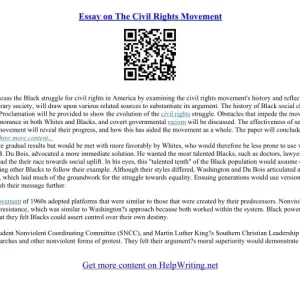
Southern Music Then & Now: A Playlist Through the Decades
The South. A region steeped in history, brimming with contradictions, and echoing with the vibrant pulse of its music. From the soulful cries of gospel to the twang of bluegrass, from the bluesy grit of rock and roll to the smooth sounds of contemporary country, Southern music has shaped the American soundscape and continues to evolve. This journey through time explores the evolution of Southern music, decade by decade, offering a curated playlist to guide your ears through its rich tapestry.
The Roots: Pre-1950s – The Foundation Laid
Before the genre labels solidified, the South’s musical foundation was laid by a potent blend of influences. African rhythms fused with European folk melodies, creating the building blocks for many genres to come. Gospel music, born in the heart of Black communities, pulsed with spiritual fervor and powerful vocals. This era laid bare the raw emotion that would define so much Southern music that followed.
| Artist/Group | Song Title (Example) | Genre | Defining Characteristic |
|---|---|---|---|
| Blind Willie Johnson | Dark Was the Night, Cold Was the Ground | Gospel Blues | Raw emotion, spiritual fervor |
| The Carter Family | Can the Circle Be Unbroken | Appalachian Folk | Harmony, storytelling |
| Bessie Smith | Nobody Knows You When You’re Down and Out | Blues | Vocal power, hardship themes |
The 1950s: Rockabilly’s Rise and the Birth of Country’s Modern Sound
The 1950s witnessed the electrifying birth of rockabilly, a genre that fused country, blues, and rhythm and blues. Sun Records in Memphis became the epicenter of this explosion, launching the careers of Elvis Presley, Johnny Cash, and Jerry Lee Lewis. Simultaneously, country music began its shift towards a more polished, commercial sound, though its roots remained firmly planted in the South.
| Artist/Group | Song Title (Example) | Genre | Defining Characteristic |
|---|---|---|---|
| Elvis Presley | That’s All Right | Rockabilly | High-energy, rebellious |
| Johnny Cash | Folsom Prison Blues | Country | Storytelling, outlaw persona |
| Hank Williams | Your Cheatin’ Heart | Country | Heartbreak, traditional instrumentation |
The 1960s: Civil Rights, Soul, and the Southern Rock Awakening
The 1960s were a time of profound social change, and Southern music reflected this upheaval. The Civil Rights Movement fueled the passionate voices of soul music, with artists like Aretha Franklin and Otis Redding delivering powerful anthems of hope and resilience. Simultaneously, the seeds of Southern rock were sown, with bands like The Allman Brothers Band blending blues, rock, and country into a unique Southern brew.
| Artist/Group | Song Title (Example) | Genre | Defining Characteristic |
|---|---|---|---|
| Aretha Franklin | Respect | Soul | Powerful vocals, social commentary |
| Otis Redding | (Sittin’ On) The Dock of the Bay | Soul | Emotional depth, smooth vocals |
| The Allman Brothers Band | Whipping Post | Southern Rock | Extended jams, blues-rock fusion |
The 1970s: Outlaw Country and Southern Rock’s Reign
Outlaw country, championed by artists like Willie Nelson and Waylon Jennings, rebelled against the Nashville establishment, embracing a more raw and authentic sound. Southern rock continued its ascent, with Lynyrd Skynyrd and Marshall Tucker Band dominating airwaves with their guitar-driven anthems.
| Artist/Group | Song Title (Example) | Genre | Defining Characteristic |
|---|---|---|---|
| Willie Nelson | On the Road Again | Outlaw Country | Unconventional, rebellious |
| Waylon Jennings | Luckenbach, Texas (Back to the Basics of Love) | Outlaw Country | Authentic storytelling |
| Lynyrd Skynyrd | Sweet Home Alabama | Southern Rock | Anthemic, guitar-driven |
The 1980s and 1990s: Country’s Commercialization and the Rise of Alternative Sounds
The 1980s and 90s saw country music become increasingly polished and commercially driven, while Southern rock diversified. The rise of alternative country and Americana blurred genre lines, offering a more introspective and nuanced take on Southern sounds.
| Artist/Group | Song Title (Example) | Genre | Defining Characteristic |
|---|---|---|---|
| Garth Brooks | Friends in Low Places | Country | Commercial success, stadium rock influences |
| R.E.M. | Losing My Religion | Alternative Rock | Southern Gothic imagery, unique sound |
| Drive-By Truckers | Decoration Day | Americana | Story-driven lyrics, raw emotion |
The 2000s – Present: A Diverse Soundscape
Contemporary Southern music boasts an incredible diversity. Country music continues to evolve, incorporating pop and other influences. Americana thrives, offering a rich tapestry of sounds. Blues and gospel remain vital forces, inspiring newer generations. Hip-hop artists are incorporating Southern rhythms and storytelling into their work. The South’s musical identity remains as vibrant and multifaceted as ever.
| Artist/Group | Song Title (Example) | Genre | Defining Characteristic |
|---|---|---|---|
| Jason Isbell | Cover Me Up | Americana | Emotional depth, songwriting |
| Sturgill Simpson | Tennesee Fire | Americana | Unique blend of genres |
| Zach Bryan | Heading South | Country | Introspective lyrics, authentic voice |
This playlist is just a starting point. Explore, discover, and let the rich sounds of Southern music transport you through time and across the diverse landscapes of this captivating region. The story is far from over – the next chapter of Southern music is being written right now.

Additional Information
Southern Music Then & Now: A Deeper Dive into the Playlist’s Evolution
A playlist charting the evolution of Southern music across decades offers a fascinating lens through which to analyze not just musical trends, but also socio-cultural shifts and the complex interplay of regional identity with broader national narratives. While a simple chronological arrangement provides a basic overview, a deeper analysis reveals more nuanced patterns and significant turning points.
I. The Pre-1960s Foundation: Shaping the Southern Sound:
The early decades of the playlist would undoubtedly feature foundational genres like blues, bluegrass, and early country. However, a nuanced understanding requires acknowledging the often-overlooked complexities. For instance:
- Racial Segregation and its Musical Manifestations: The early Southern music scene was deeply segregated. While white artists dominated the mainstream country scene, Black artists were crafting equally influential blues and gospel styles, often in significantly different contexts. Analyzing the geographical distribution and stylistic differences between these genres reveals the stark realities of racial division and the limitations placed on Black artists’ access to broader audiences. A case study of the Chitlin’ Circuit’s importance in developing and promoting Black musicians offers valuable context.
- Appalachian Influences: The Appalachian region’s unique musical traditions – characterized by strong vocal harmonies, instrumentation like the banjo and fiddle, and storytelling through song – significantly impacted bluegrass and early country. Examining the migration patterns and stylistic adaptations of Appalachian musicians as they spread across the South highlights the dynamism of musical exchange and adaptation.
- The Rise of Country Music as a “White” Genre: The commercialization of country music in the mid-20th century coincided with its increasing association with white Southern identity, often overlooking or appropriating elements from Black musical traditions. Analyzing the role of Nashville’s music industry in shaping this narrative is crucial.
II. The 1960s – 1980s: The Civil Rights Era and Beyond:
The playlist’s representation of this period needs to go beyond simply including artists like Aretha Franklin or The Allman Brothers Band. Critical analysis should include:
- The Civil Rights Movement’s Impact: The Civil Rights Movement profoundly impacted Southern music, fostering a greater cross-pollination of genres and a more prominent platform for Black artists. Examining the lyrical themes of protest songs and the evolving racial dynamics within the music industry provides a deeper understanding of the socio-political context.
- The Rise of Southern Rock: Southern rock’s emergence is closely tied to a reaction against the perceived homogenization of popular music. Its embrace of a more rebellious and regionally specific sound, incorporating blues, country, and rock elements, warrants a discussion of its cultural significance and its complexities, including criticisms around its largely white male representation.
- Outlaw Country’s Rebellion: Simultaneously, Outlaw Country, spearheaded by artists like Willie Nelson and Waylon Jennings, challenged the established norms of Nashville’s country scene. Analyzing their rejection of polished production and their embrace of a more raw and authentic style reveals the internal tensions within the country music industry and the evolution of its aesthetic.
III. 1990s – Present: Globalization and Genre Blending:
The latter half of the playlist demands analysis of:
- The Rise of Southern Hip Hop: Artists like Outkast and UGK significantly altered the landscape of hip hop, injecting distinctly Southern flavors and challenging the genre’s predominantly Northern and Western Coast dominance. Examining their influence on mainstream hip-hop and their regional specificity is crucial.
- The Continued Evolution of Country Music: Modern country music showcases a vast spectrum of styles, from pop-country crossover to neo-traditionalism. Analyzing the commercial pressures that shape this diversity and the debates surrounding genre authenticity are essential.
- The Global Reach of Southern Music: The internet and globalization have allowed Southern music styles to reach a worldwide audience, leading to cross-cultural collaborations and influences. Analyzing these global interactions and their impact on both Southern and international music scenes offers valuable insights into the increasing interconnectedness of musical cultures.
Conclusion:
A comprehensive analysis of “Southern Music Then & Now” requires moving beyond a simple chronological listing. A deeper dive into the socio-political context, the interplay of different genres, and the complexities of racial and regional identity reveals the rich tapestry of Southern musical heritage and its ongoing evolution. Using quantitative data on album sales, chart positions, and streaming numbers in conjunction with qualitative analyses of lyrical content and musical styles can provide a more holistic and compelling narrative. Finally, acknowledging the ongoing conversations around cultural appropriation and representation within the Southern music landscape is vital for a truly insightful and responsible exploration of the topic.






